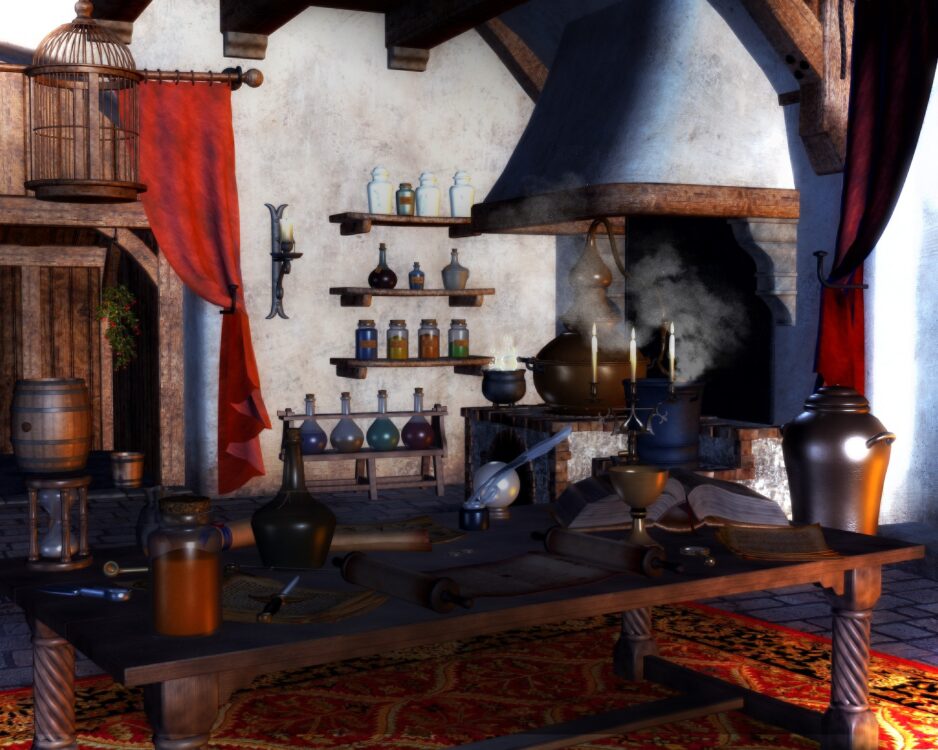For centuries, alchemists, ancient forerunners of chemists, set out to transmute one element into another. This prospect attracted people of a variety of different professions from miners to natural philosophers to goldsmiths. Even physicians of ancient times grew interested in alchemy, as many saw the biochemical reactions within the human body as transmutational processes.
Today, alchemy is synonymous with a process known as chrysopoeia — the transmutation of a base metal, like lead, into gold. Alchemists believed that, along with traditional metallurgical practices, there was one unique ingredient required for chrysopoeia: the philosopher’s stone.
Today, alchemy is synonymous with a process known as chrysopoeia — the transmutation of a base metal, like lead, into gold.
Though sharing many similarities with the scientific method, alchemy was a science reflective of its time. With alchemists dating back far before the Gutenberg printing press — in times of limited intellectual exchange, religious dominance, and sovereign rule — the records of alchemy share greater resemblance to mythical stories than a modern, scientific journal. For instance, Chinese alchemists were known to have incorporated the fundamentals of feng shui, and European alchemists were known to have considered astronomy in their search for the philosopher’s stone. Additionally, alchemists were notorious for secretly recording the procedures and ingredients of experiments in riddles, allegories, and pictures. This was likely strategic and presented alchemy more as a magic than a science, as the secret procedures helped to ensure successes and failures were kept private.
Though a philosopher’s stone was never discovered and chrysopoeia was never achieved, alchemy and the quest to turn lead into gold has captured the imagination of people for centuries — a success in synthesizing the philosopher’s stone meant a life of tremendous wealth and power. Ultimately, the failing of ancient alchemists was their rudimentary understanding of chemistry — years away from even a basic form of the periodic table. Much of their work was built on the false assumption to treat non-compounds, pure elements, like compounds. A pure metal is simply an element, not a hybrid, and cannot be transformed into a new substance under any conditions accessible to the ancient alchemists.
After years of failure and limited progress, alchemy was soon dismissed as a pseudoscience, and those associated with the practice were branded as charlatans. Despite a tumultuous history, alchemy did ultimately lay a foundation for physical science and chemistry. Though the end goal of alchemy was unachievable, alchemists were some of the first to think critically about the structure and formation of chemicals and compounds. Additionally, though record-keeping methods were often secretive, alchemists were true experimentalists, developing new techniques to achieve a scientific goal. Some of the most famous scientists in history were known to have had interests in alchemy, including Irish-born chemist Robert Boyle, Swiss-born physician Paracelsus, and English physicist Sir Isaac Newton.
Despite a tumultuous history, alchemy did ultimately lay a foundation for physical science and chemistry.
With today’s understanding of elemental structure, the transmutation of an element is actually possible and, in fact, very common. As an element is defined by the number of protons in its nucleus, the addition of a hydrogen atom, or proton, or the splitting of a larger element would result in a new element. For instance, in experimental fusion reactors, heavy isotopes of hydrogen merge to form helium, and in commercial nuclear reactions, uranium breaks down into xenon and strontium.
Chrysopoeia is also possible with today’s technology. For example, over 30 years ago, scientists at the Lawrence Berkeley National Laboratory produced very small amounts of gold from bismuth, an element next to lead on the periodic table. This was achieved using a particle accelerator, where beams of carbon and neon nuclei slammed into bismuth at the speed of light. This optimized collision sheared off part of the bismuth nucleus, removing four protons. Since bismuth has an atomic number of 83, the removal of four protons resulted in the element that had 79 protons, which was gold.
Ultimately, bismuth was used as the starting material instead of lead because the final isolation of gold was easier. However, the dream of lead into gold is still possible and just as straightforward as bismuth into gold or mercury into gold, though even more expensive. The particle accelerator used in this experiment costs about $5,000 per hour. This corresponds to a cost over $1 quadrillion per ounce of gold, which far exceeds the going rate of less than $2,000 per ounce.



